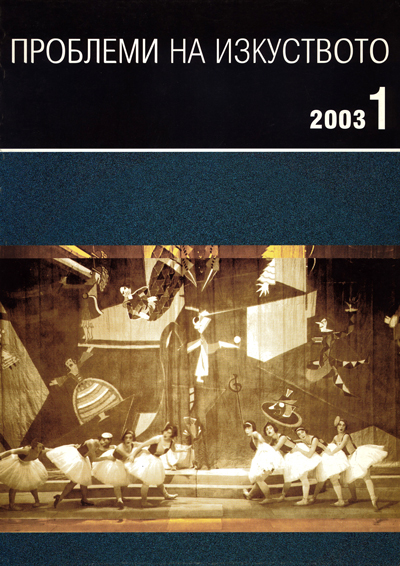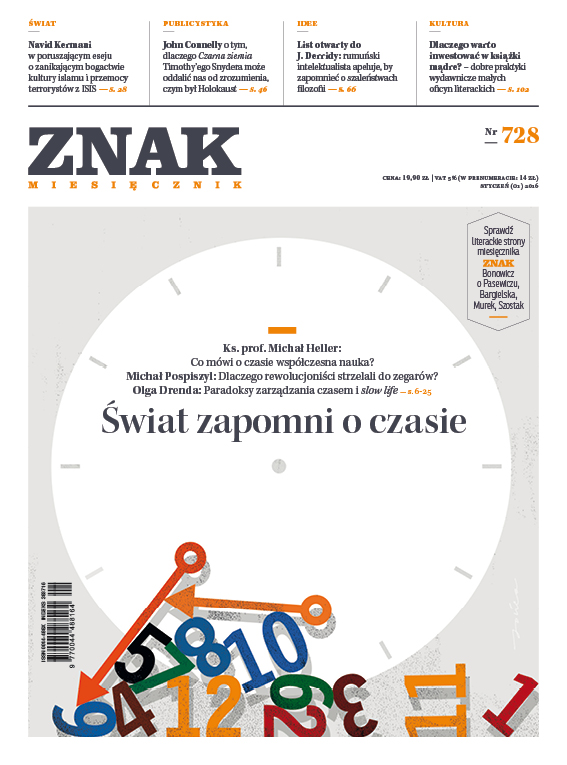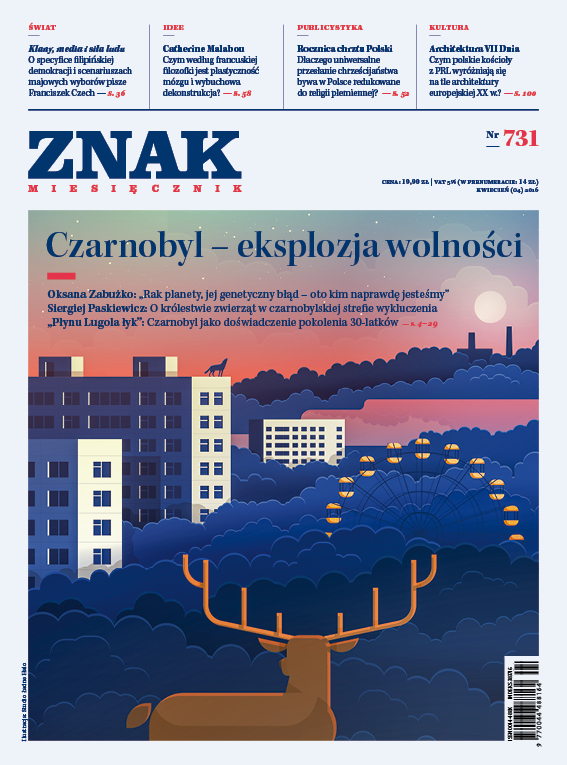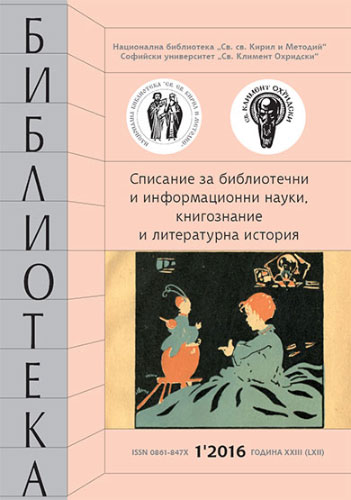
ДОБРОТО И ЗЛОТО В ПРИКАЗКИТЕ НА ГЕОРГИ РАЙЧЕВ „УМАЙОН“ И „ЧУДНОТО ОГЛЕДАЛО“ – ПРОЯВЛЕНИЯ И ТРАНСФОРМАЦИИ
The article discusses two versions of tales by Georgi Raychev and the transformations in their poetics.
More...We kindly inform you that, as long as the subject affiliation of our 300.000+ articles is in progress, you might get unsufficient or no results on your third level or second level search. In this case, please broaden your search criteria.

The article discusses two versions of tales by Georgi Raychev and the transformations in their poetics.
More...
This paper focuses on the image of the child. In Bulgarian fairy tales between the two world wars the children’s images play three roles with ideological and moral, compositional and narrative functions.
More...
Konstantin Konstantinov’s world in the books “Tales for You“ (1924) and“Tales of the Cricket“ (1927) reproduces the image of the transcendent Plato’sworld, the other, the parallel world in which we yearn to recall our origin andour own selves, overcoming our fleshliness.
More...
This study rationalizes on the figure of the narrator in K. Konstantinov’s fairy tales as an explicit expression of awareness of the transition from folklore to an author‘s fairy tale.
More...
The current study examines some of the tales of the great poet and writer Elin Pelin. Lot of them are poems and by this close to the children’s world. The structure is simple and very similar to theater composition, so they maybe understand as games with roles and much amusement.
More...
The article presents stories in prose by Bulgarian poets – Assen Razcvetnikov, Yordan Stubel and Emanuil Popdimitrov. It is looking for an answer – what are poets telling when they write prose.
More...
This text demonstrates the influence that Elin Pelin exerted with his royal fairy tale on Lachezar Stanchev, thirty years his junior, during the 1920–40s.
More...
The article follows the dialectics in the validation of short narrative forms in children’s literature between the two World Wars.
More...
This paper focuses on some important factors exercising influence on the development of fairy tales as the most significant literary genre in children’s literature.
More...
The text examines “A tale about the tale” from Elin Pelin with help of the psychoanalytical theory.
More...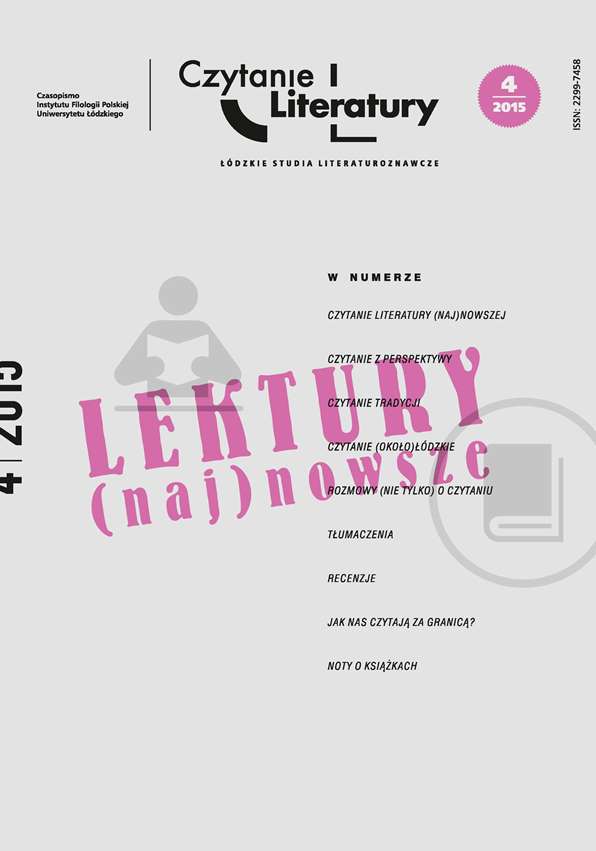
This is the second and final part of Ricardo Piglia’s essay, Writer as Reader. The author continues his reflections on Gombrowicz’s essay Przeciw poetom (‘Against Poets’) and its implications for defining literariness. Piglia also outlines parallels between circulation of poetry and circulation of money.
More...
Excerpt from the best novel by the Ukrainian writer Iryna Vilde, Povnolitnidity (Grown-up Children), published in 1952. It is an autobiographical novel which discusses the young protagonist’s path to adulthood.
More...
Responding to the questionnaire, the researcher discusses the reception of Polish literature in Belgium, especially in the Francophone area. She draws attention to its advantages: poetic character, reportage as a significant genre, but also the negative aspects, such as the commercialization of the publishing market.
More...
What is literature in the modern world? What is its purpose? Do you even exist? Such and other questions are raised in the current debate about reading and not reading. For many authors, literature means asking questions about man, the world, or the purpose of life. It is simply the true meaning of being in the world. It turns out, however, it is slowly dying, as we only read newspapers, manuals and billboards, and sometimes not even that. Why is this happening? Many blame academicism, present both in schools and universities. In addition, reading is associated with elites, who are educated or who have significant financial resources at their disposal. Some also believe that access to books is hindered by advances in technology.
More...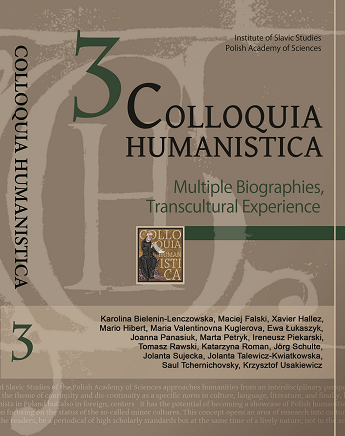
The following sketch is a depiction of a prewar stage of life as well as work of Julian Stryjkowski who was a Polish writer of Jewish origin. Identity quandary of the author of Voices in the Dark was presented against the background of changes taking place in the Jewish world at the turn of the twentieth century juxtaposed with the parallel choices of Shmuel Josef Agnon and Isaac Bashevis Singer. The aim of the essay is to present the role of the language of writing in the process of shaping authors’ personal identity.
More...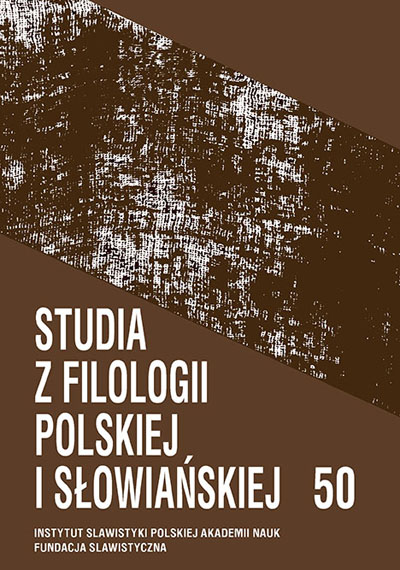
The purpose of the Second Afterword is to emphasise that current interpretations of Resztki Słowian by linguists are exceptionally uncritical and, consequently, one-sided. I do not find Alexander Hilferding's account useless, but I believe that, as any other subjective report, it requires a critical approach. It should be emphasized that it was prepared in a very short time, and its Russian author cannot be considered a reliable researcher. Therefore, its scientific usefulness is limited. It has already been argued that the book was written with the help of Florian Ceynowa; however, I intend to prove a new proposition. In my opinion, the aforementioned assistance was much more significant than has been assumed by recent linguistic research, a fact Hilferding did not always properly point out. Moreover, the actual scope of help on the part of Ceynowa in relation to the Kashubian language of the eastern part of Koszalin district was far greater than it has been acknowledged by linguists, who fail to take into account the fact that Ceynowa had been studying it since the early 1840s, and in 1845 he conducted his own independent linguistic research in Słupsk county.
More...